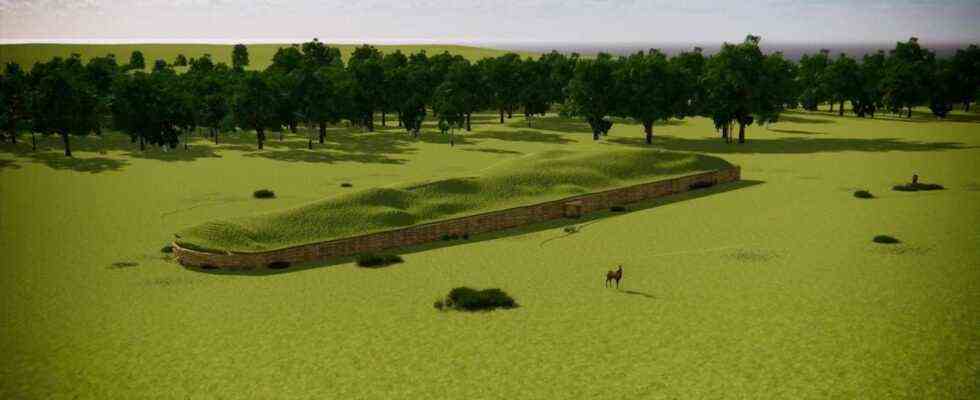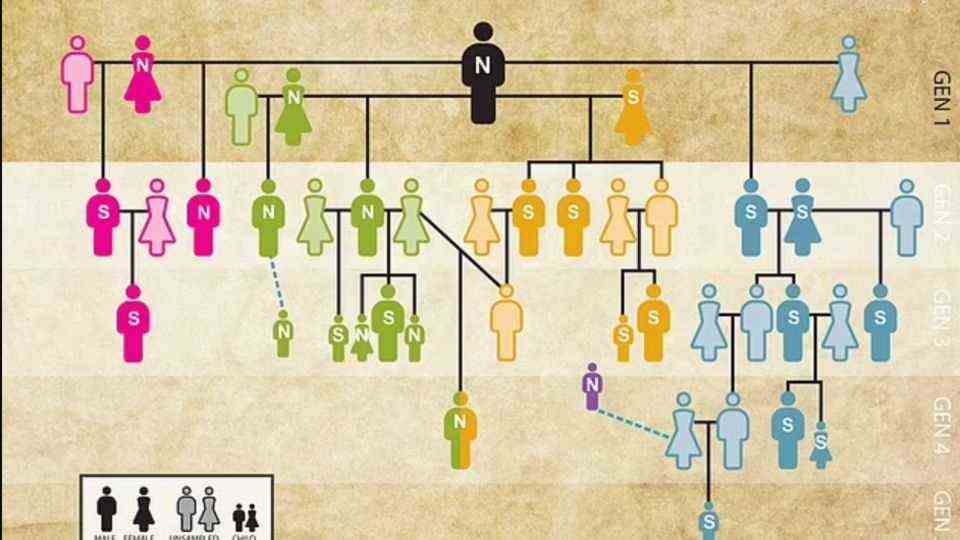Stone age
Family Sex – DNA reveals the world’s oldest family tree
Reconstruction of the facility in Hazleton North
© PR
A man settled in England with four women and founded a dynasty. The DNA of the dead of this Stone Age clan has now been deciphered.
Five generations of an extended family were buried in a 5700 year old grave in Hazleton North, Gloucestershire. A DNA analysis of the 35 remains makes it possible to reconstruct the oldest family tree in the world. The position of the dead in the tomb indicates their position in the clan.
The grave dates from the time when people were just settling down after agriculture was introduced in Britain. The people in the tomb belong to the family of a man and his four wives. Along with agriculture, the patriarchy also prevailed, and the descent from the progenitor authorized the use of the site. The other descendants were buried by the four ancestral mothers depending on their relatives. Presumably the first generation was particularly revered because of the settlement and permanent occupation of the land.
Where were the women?
Prof. David Reich of Harvard Medical School in Boston says, “Two of the women and all of their children are in the southern chamber – as well as their children up to the fifth generation. The other two women and their children are mainly in the north chamber, although some of them later moved to the south chamber during the life of the tomb, which is probably due to the collapse of the northern corridor, which made burial there no longer possible. “
There are also indications that “step-sons” were also accepted into the family. Men who are descended from a woman who was also buried there, but not the biological father. A sign that women brought previous children with them to the extended family. Apart from the ancestral mothers and two girls, there are no adult women in the grave.
“There is a lack of women. So the question arises where they are, because men and women are born about the same frequency. It is a mystery – and it is not that they are in the grave next door, because overall they are absent in the whole community “, says Prof. Reich. The researchers found that men were usually buried with their father and brothers, suggesting that the ancestry was patrilineal, meaning that later generations who were buried in the tomb were solely through male relatives with the first Generation connected. The absence of the adult daughters suggests that their remains were either buried in the graves of the male partners with whom they had children or in some other undiscovered site.
Signs of polygamy
Furthermore, the DNA shows that the people of the Neolithic did not attach any importance to monogamy. Men had children with several women, and women in turn had children of different men. Interesting detail: if the children were from only one man, the man and woman were not genetically related. If a woman had children from several men, these were mostly close relatives. That the people had different partners at the same time seems to be the plausible explanation. However, it is also conceivable that the different partners entered their lives one after the other. The dating of the finds is so precise that one could determine the life of the people to within a few years.
Source: Nature





